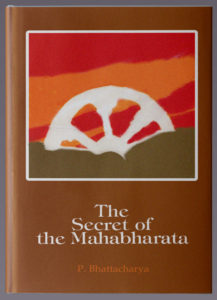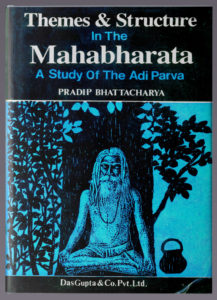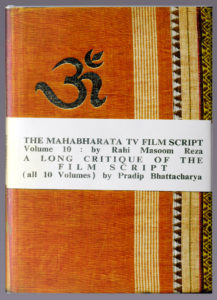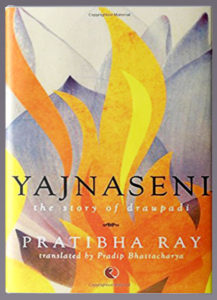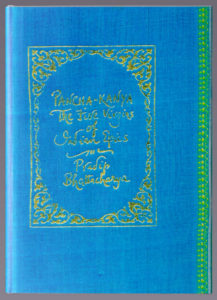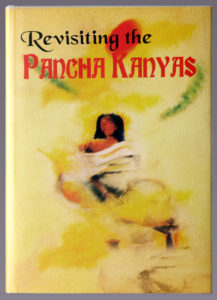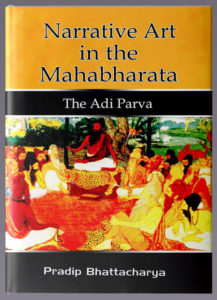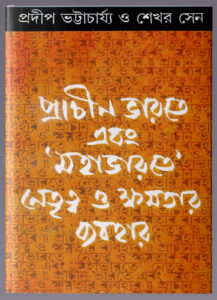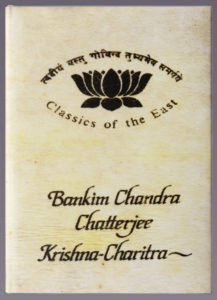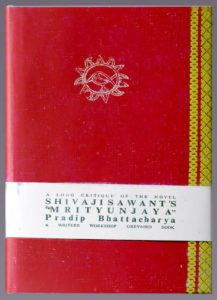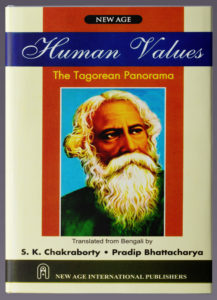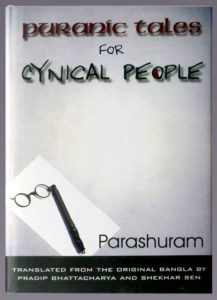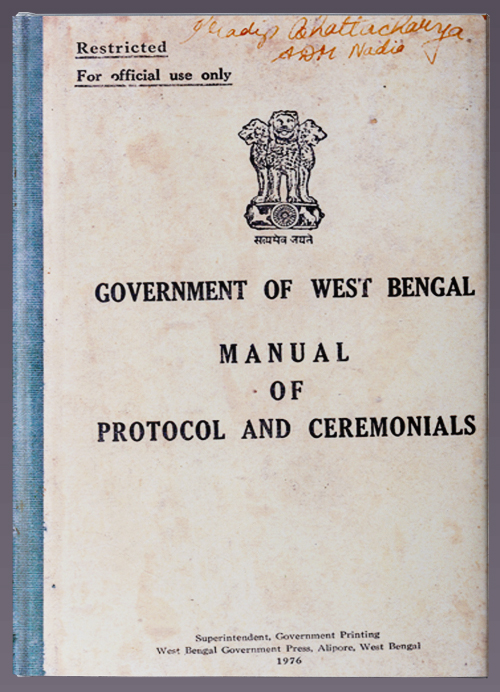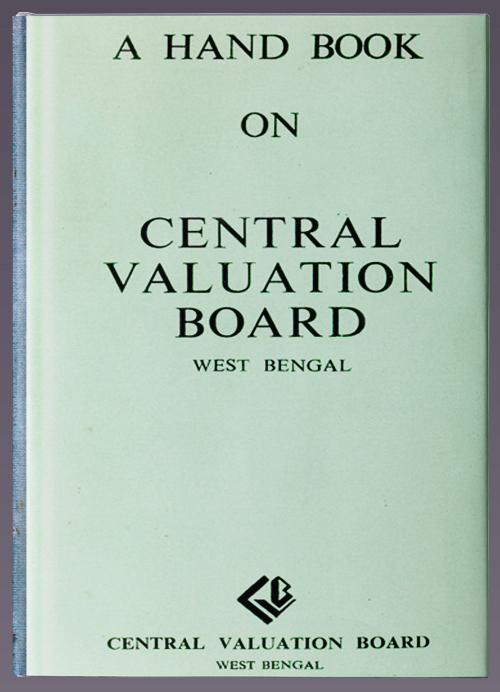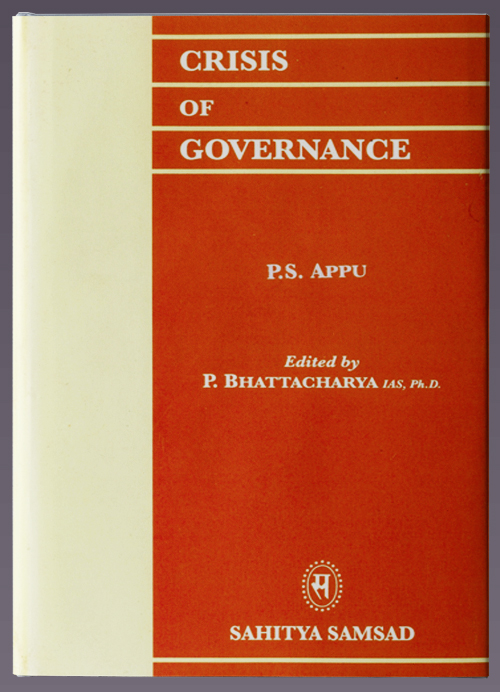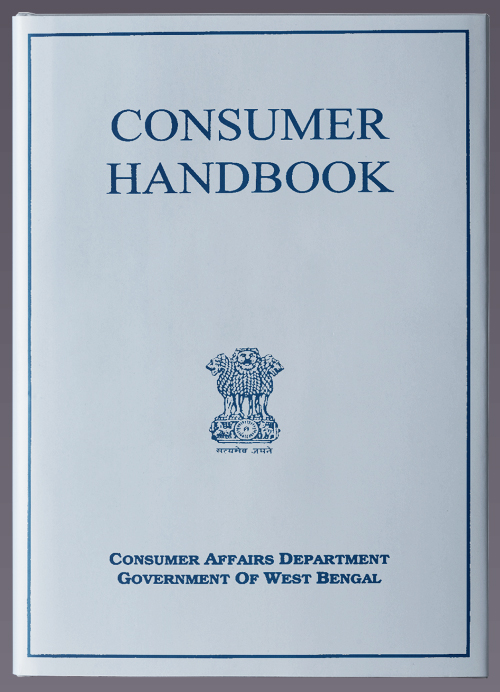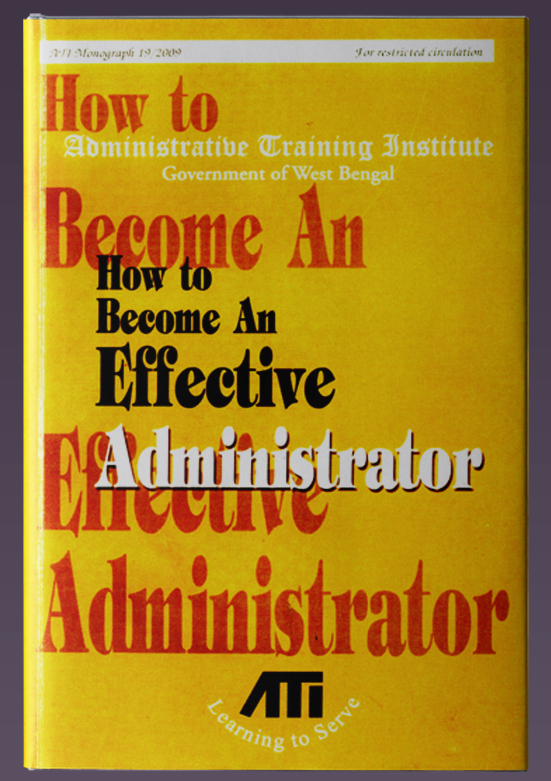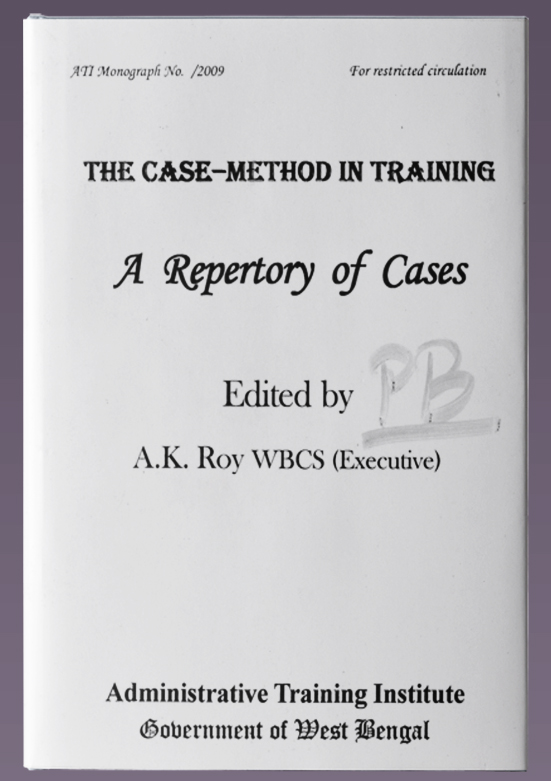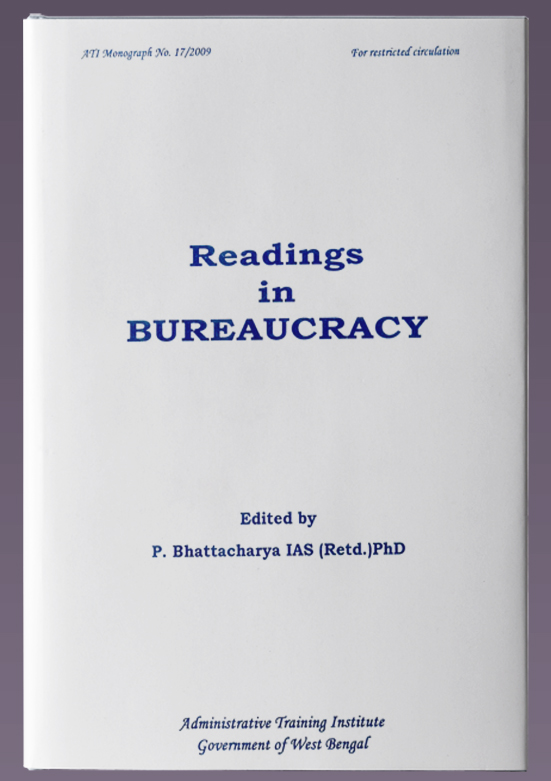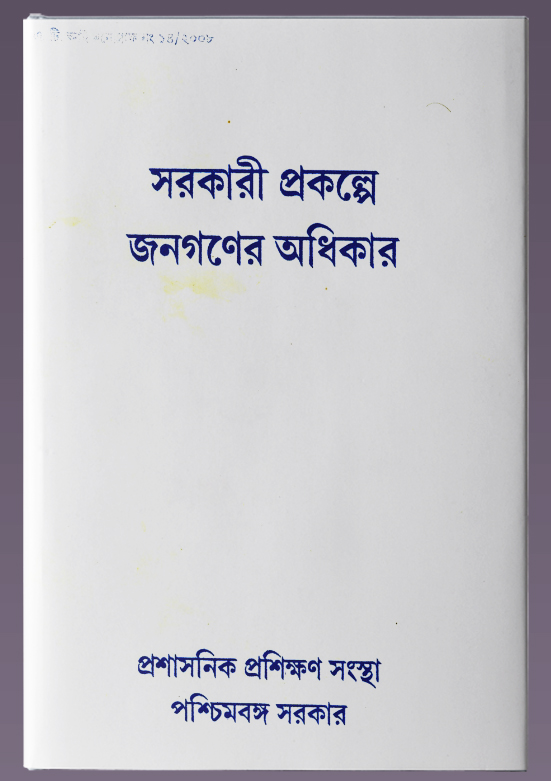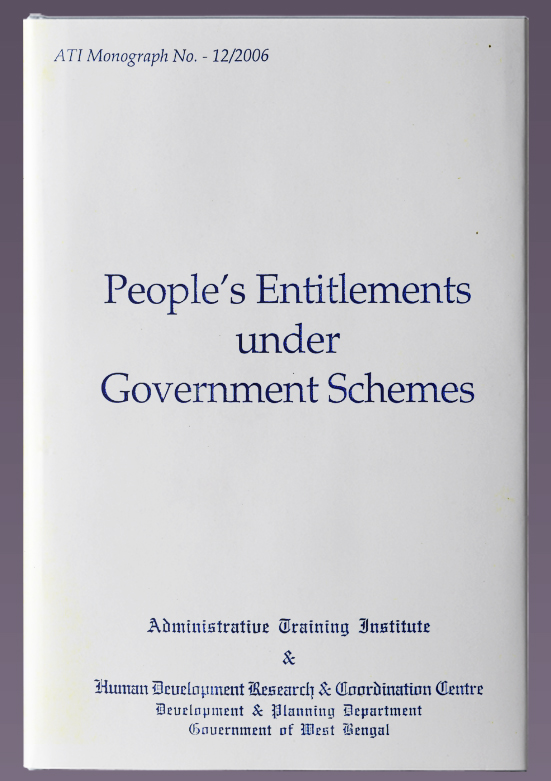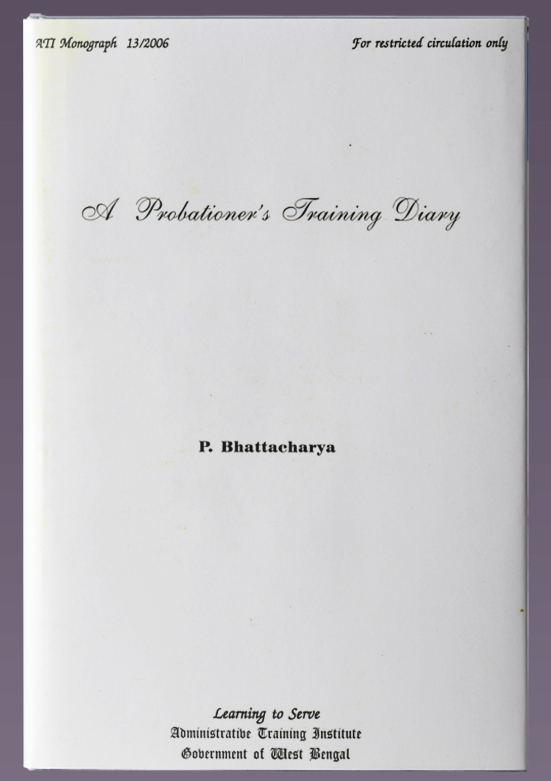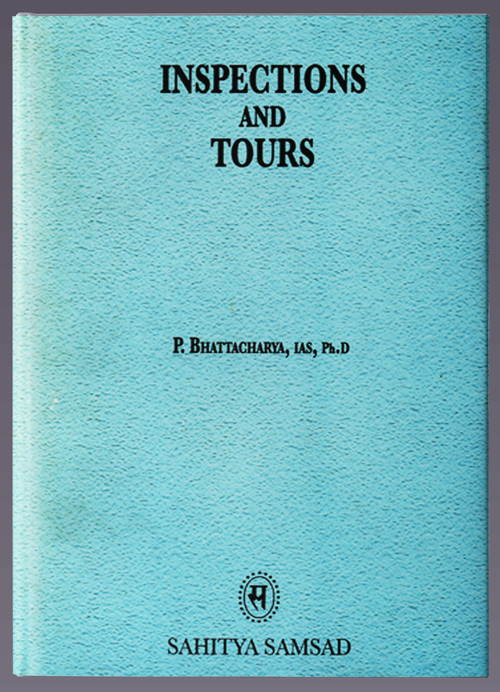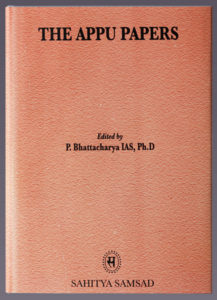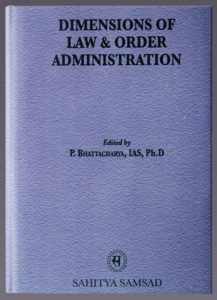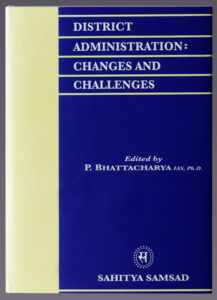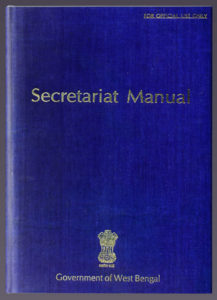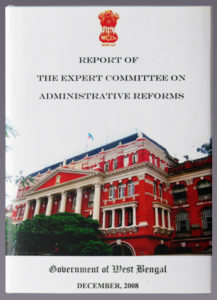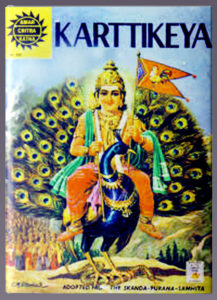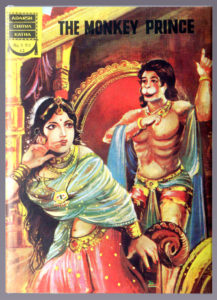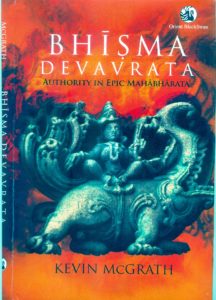 Kevin McGrath: Bhishma Devavrata—authority in epic Mahabharata, Orient Blackswan, 2018, pp. 180, Rs. 945/-
Kevin McGrath: Bhishma Devavrata—authority in epic Mahabharata, Orient Blackswan, 2018, pp. 180, Rs. 945/-
So far there have been only two novels on the patriarch of the Mahabharata (MB): M.M. Thakur’s “Thus Spake Bhishma” (1991) and Kamesh Ramakrishna’s “The Last Kaurava” (2015). McGrath’s is the sole book-length study of how Bhishma comes to be regarded as the supreme moral authority. So much so that Krishna, instead of advising Yudhishthira himself, has Bhishma from his death-bed lecture Yudhishthira on various aspects of dharma over an astonishing period of two months speaking as both prince and priest.
McGrath finds that in MB morality is fourfold: a behavioural value-system; variable depending upon conventions; transcendent (the Gita); and personal. The last aspect is also the most vexed because this “pitamaha” (grandfather) is celibate and does not continue his lineage. Ambivalence characterizes him. He is torn between duty to the throne and affection for the Pandavas and their right to the throne. McGrath argues that Bhishma’s understanding of right conduct stems not from tradition and shastras but from an epiphany. McGrath argues that the theophany to which Krishna exposes Bhishma in Dhritarashtra’s court engenders a detachment because of which he can fight against those whom his heart favours and accept death without a murmur. Drona underwent the same experience, but we do not find him evincing such “vairagya”. Both fall undefeated, voluntarily laying down their arms and enter into meditative trance to die.
His authority stems from his being the only true descendent of Kuru. True, his eldest paternal uncle Devapi became a sanyasi being denied the throne by Brahmins because of a skin defect. But how do we forget the existence of Shantanu’s brother Bahlika? He had a son named Somadatta who fought in the war. It is not clear how Bhishma getting Pandu married to Madri would restore the patriline as she has nothing to do with Bahlika.
McGrath does not resolve how Bhishma reconciles keeping Karna out of the war for ten days with loyalty to the throne. The parallel with Achilles sulking in his tents is pronounced. This is paralleled by Karna, despite his much-vaunted loyalty to Duryodhana, not capturing Yudhishthira after trouncing him, Bhima, Nakula and Sahadeva. Further, both Bhishma and Karna are displaced eldest sons, a leit motif in the epic. The two greatest philosophers, Krishna and Bhishma, are both eighth sons with their elder siblings murdered.
McGrath does not clarify how Duryodhana displays magus or shaman-like characteristics. Neither is it correct that the Dhartarashtras have no cult status. Temples to Duryodhana (and Karna), Shakuni and Gandhari exist in Garhwal, Kerala and Bangalore. Nor is it that Bhishma is not worshipped anywhere. Allahabad has a temple in Daraganj built in 1961 with an image of Bhishma on the bed of arrows. Special puja is conducted during the “pitri-paksha”. Narkatari Temple with a pond called “Bhishma Kund” is at Kurukshetra commemorating where Bhishma lay. It is not purely a Kshatriya view of the universe that is depicted. Bhishma’s discourses include a considerable portion portraying varying Brahmin views as well. Further, Sanjaya does not merely see and recount; he actually participates in the war, being almost killed by Satyaki. Sanjaya is the world’s first war-correspondent.
The reference to Vyasa as “chiranjiva” (p.5), ever-living, is puzzling as he is not described thus, unless it is taken as a reference to this appellative being given to the series of such editors/compilers of whom Krishna Dvaipayana belongs to the Dvapara epoch. Again, with the detailed description of the wondrous hall constructed by Maya, how can we say that MB depicts “an idealized culture where there is…no substantive architecture”?
McGrath’s point is well taken that precise portrayal of rituals is missing, as though these had become unfamiliar. Similarly, physical details of characters are few. They are mainly moral figures. Vyasa’s conjuring up of the shades of the dead who rise with “a great sound” from the Ganga is taken as a metaphor for the making of the “maha-kavya”. We, like Dhritarashtra, visualise in the mind’s eye what Vyasa (and Sanjaya) narrate.
It is curious that there is no reference to the Harappan culture (unless we count Shiva as one) and few to Shramanic tradition which would have been prevalent alongside. There is a solitary reference to a “kshapanak” (naked Jain mendicant) and to “pashanda” (Buddhist/Jain heretic) besides the lokayata Charvaka whom Brahmins kill for condemning Yudhishthira. Some of the stories Bhishma tells are similar to Buddhist jatakas. Romila Thapar has suggested that the Harappan was a matrilineal society. A late Buddhist text lists Gujarat as one of the “pancha-dravida” lands. The Kshatriya lineage destroyed by Parashurama is regenerated by its women who approach Brahmins for sons. Such progeny are “suta” by class, making all later royalty’s claim to Kshatriya-hood spurious, unless Parashurama’s annihilation was restricted to the Haiheya clan. In Hastinapura the matriline begins with Satyavati making her pre-marital son Vyasa (of mixed caste) continue Shantanu’s line. It is also shown in the overwhelming influence of Satyavati over Bhishma and of Kunti, her nephew Krishna and Draupadi over the Pandavas. Finally, the MB portrays a Yadava take-over: the great-grandsons of Kunti and her nephew Krishna ultimately rule Hastinapura and Indraprastha. McGrath even argues, “it is his (Bhishma’s) role to advance this Yadava coup.”
McGrath is the first scholar to point out Kunti’s culpability in causing the partition that culminated in the war by concealing Karna’s identity. On a different level, Surya bears equal blame in not supporting his son effectively whereas Indra comes to the aid of Arjuna powerfully. Kunti’s causation of the “bheda” is structural, while Draupadi’s is temporal, constantly goading her husbands towards the holocaust. Their influence is far more pervasive than those of Kryseis and Briseis in the Iliad to whom McGrath compares them.
It is not only that we have no idea of which text of the MB Nilakantha (late 17th c.) was commenting upon, as McGrath says. In 1584-86 when it was translated into Persian as Razmnama, there is no indication of what text was used. The names of the scholars Akbar appointed indicate that they were drawn from all corners of India, showing awareness of the existence of different versions. However, we do know from the illustrations Akbar commissioned that for the Ashvamedha Parva the Emperor chose Jaimini’s composition instead of his guru Vyasa’s.
McGrath maps six crises in Bhishma’s story which bring about his fall: the abduction of Amba and its results; his advice to partition the kingdom; his offering the supreme honour to Krishna in the rajasuya yagya; his aloof stance in the molestation of Draupadi; his silence about Karna’s birth and his acceptance of marshal-ship in Kurukshetra. Thus heroic Bhishma is at the very core of the collapse of order in the narrative.
There is a seventh decision that plays a critical role in the plot: his appointing Drona as royal tutor knowing his obsessive animosity against Drupada. In the Harivansha (I.20) Bhishma recounts how the usurper of Panchala, Ugrayudha, demanded that the widow Gandhakali (Satyavati) be handed over to him. Bhishma killed him in a mighty war and restored the kingdom to Prishata, Drupada’s father. Vyasa never clarifies why Drupada holds a yagya seeking a son to kill Bhishma.
Bhishma’s regency is described in ideal terms, making him the authority for declaiming on governance. People clamoured for him to become their raja, he tells Durodhana (V.145.25). His description of Yudhishthira’s rule in the Virata Parva (IV.27) echoes this idealistic picture. However, later the people criticise him for not protecting the Pandavas against Duryodhana’s machinations and say that he “does not attend to dharma” (I.137.5). When the Pandavas depart on exile they revile him again, along with Vidura, Drona and Kripa (here McGrath mistakes “Gautama” as referring to Drona who is a Bharadvaja, whereas Kripa is a Gautama). The vow he takes gives Devavrata the appellative “Bhishma”, “terrific” and that is what characterises his speech. The only person to vilify him, and at length, is Shishupala. Bhishma’s response is to offer up himself as an animal sacrifice. Instead, it is Shishupala who is beheaded. Bhishma repeats this in the Bhishma Parva, and his offer is accepted. Although McGrath says that the killing in the rajasuya is not commented upon, Vyasa categorically prophesies calamities as a consequence on being asked by Yudhishthira.
It is, however, difficult to agree with McGrath’s repeated assertion regarding Bhishma’s “transcendental awareness” of dharma as truth attained through dhyana-yoga as it is not manifested in his conduct. The unique lucidity of behaviour that McGrath praises is nowhere in evidence in the dice game episode where he is the epitome of confusion. Even the code of battle he lays down is not observed during his marshal-ship. However, it is true that Bhishma stands as the moral standard in the poem as far as his discourses are concerned, which are in a didactic poetic tradition totally different from what has gone before. It is another matter that Duryodhana gives him short shrift, yet cannot escape making him the marshal.
By stating that Bhishma and Vyasa are descendants of the rishis Vishvamitra and Vasishtha, who were contemporaries, McGrath creates a chronological problem. Vyasa is Vasishtha’s great grandson, but Bhishma is many generations after Vishvamitra and is descended from his daughter Shakuntala, who is half-human as is Bhishma himself having Ganga for his mother. It is interesting that the three preceptors of the Dhartarashtras—Bhishma, Drona and Kripa—are born of apsaras. On the other hand, their opponents, the Pandavas, have devas for fathers, with Bhishma being the Vasu Dyaus (sky) reborn. Like Krishna, the other avatar, he is the eighth born with his elder siblings having been killed. Bhishma remains caught in the middle, a predicament that Krishna easily side-steps. Unlike Vidura, Bhishma never asks Dhritarashtra to reject Duryodhana. Karna, born of Surya, queers the pitch of the Dhartarashtra-Pandava balance. As with Karna, Bhishma’s sense of personal honour supersedes loyalty to Duryodhana. Neither will kill the Pandavas (Karna makes Arjuna the exception, as Bhishma does Shikhandi) though it may cost Duryodhana victory. The phrase, “egotistical sublime” can well describe both.
Beginning with driving Satyavati to Hastinapura to wed his father, Bhishma becomes the bride-supplier to its princes. Kunti is the only exception. The repeated rite of abduction whereby Bhishma, Arjuna and Karna (for Duryodhana) obtain brides raises the question why this form of marriage named “rakshasa” was approved for Kshatriyas. Why was the royalty adopting a custom of people they condemned?
McGrath makes the very striking point that the MB is about adharma as it deals with the onset of the “impoverished” Kali Yuga when dharma stands on just one foot. Thus, only a fourth of all action and speech is dharmic! All characters are, therefore, compromised, Bhishma most of all. He chooses to act on loyalty instead of upholding moral judgement. “Kinship is the absolute, not ethics.” That is why this is such an existential poem and in that inheres its tragic appeal to us.
It is interesting to find McGrath asserting that the battle in the Virata Parva is drawn from a different poetic tradition, very archaic in style, because many Western scholars opine that this is a burlesque added on later. Sri Aurobindo held that this parva shows the young Vyasa at work.
Bhishma is the warrior of unrivalled excellence and he describes his ability at length to Duryodhana.. When McGrath argues that Bhishma is never defeated, he forgets the Virata Parva encounter where he and everyone else is laid low by Arjuna. Bhishma Where Drona is called “the more experienced warrior” has not been cited. Nor does Bhishma call Karna “a half charioteer” (p. 71). The word he uses is “ardha-ratha,” i.e. “half-chariot-warrior”. Bhishma’s supremacy as warrior is established by his victory over his guru Parashurama, the decimator of Kshatriyas. There is a contradiction here because Parashurama would not tutor anyone but a Brahmin, as Karna finds out to his cost. Further, in the beginning in the list of contents (I.2.79) Bhishma is described as guarding Chitrangad. No evidence of this is forthcoming as this young prince dies in a duel with no sign of his protector being around. Indeed, Bhishma’s regency is characterised by status quo, with no awareness of Jarasandha’s imperial designs reaching out from Magadha to adjoining Mathura and surrounding areas, imprisoning numerous kings.
McGrath alone has pointed out that Bhishma’s reluctance to fight his guru prefigures Arjuna’s predicament. Both events occur at Kurukshetra which is also the scene of the philosophical discourses of both Bhishma and Krishna. McGrath states that whereas Arjuna overcomes his qualms about violence, Bhishma does not (fn. 33). If that were so, Bhishma would not have gone on slaughtering ten thousand troops daily for ten days.
It is not only Bhishma’s charioteer who goes unmentioned, as McGrath remarks, but Drona’s too, which is very peculiar as the charioteer’s role is seen as crucial. It is as though Bhishma were totally alone in war, as solitary as in his celibacy, not needing another presence. He never loses control even when Krishna loses his composure and rushes at him twice over. Apart from Vidura who is no warrior, he is possibly the only character truly detached from his own self, so much so that he reveals how he can be brought down. Karna, too, gives up his impenetrable skin-armour, and in doing so values adherence to his word over loyalty to Duryodhana, just like Bhishma. Both are altruistic, but Bhishma does not behave thus for sake of glory. That is the nature of his renunciation, “vairagya”. He never voices his emotional anguish and only announces that he is tired of his body and invites Yudhishthira to kill him.
The special death that he, Drona and Vidura undergo, suggests McGrath, is a result of the theophany experienced during Krishna’s embassy to the Hastinapura court. McGrath trips up here in writing that Vidura dies in the Mausala parva, whereas it is in the Ashramavasika Parva. McGrath feels that Bhishma “is the truest practitioner of Krishna’s Gita teaching…able to practise vairagya” in action, unconcerned about the fruits of his acts. Arjuna forgets the teaching and asks for a repeat performance in the Ashvamedha Parva. Bhishma alone sings paeans to Krishna, not Arjuna. His is a profound moral understanding of the cosmos, symbolised by the hamsa (swooses) who appear when he falls. No wonder that he should be the one to discourse on the paths to attaining moksha at great length. The adharma-centred eleven books are more than balanced by the two massive tomes on dharma.
McGrath asserts that Bhishma’s discourses on governance form the template of the Gupta imperial rule, being quite different from the type of kingship modelled by Yudhishthira, which is power shared with brothers and Krishna, and characterised by seeking revenge for justice. What Bhishma depicts at very great length is a codified system of judgement that we find in the dharmashastras and Kautilya. It is common in late Bronze Age cultures (Hittite, Assyrian, Judaic), none of which are anywhere as encyclopaedic. In doing so he also reveals a massive store of oral tradition replete with moral tales of incredible variety and speaks in multifarious voices (McGrath counts as many as 280) but without emotion, despite the anguish he has suffered far longer than anyone else. That lifelong suffering, despite which he has not deviated from his principles, also sets him on a moral pedestal because of which his authority extends well beyond the poem into all audiences.
McGrath is quite correct in positing that the Anushasana Parva was originally part of the Shanti Parva which thus consisted of four dharma-texts: raja, apad, moksha, anushasana. Indeed, the list of contents does not mention the Anushasana separately. Further, the oldest list of parvas found in the Spitzer manuscript (1st-2nd century CE) in a cave in Xinjiang province of northwest China does not mention it. Vyasa informs Yudhishthira that Bhishma learnt all this from Brihaspati, Ushana, Chyavana, Vasishtha, Sanatkumara, Markandeya and Indra. The discourses are in a style completely different from the preceding heroic mode.
Where Dharma’s avatar Vidura is only a speaker, except where he rescues the Pandavas, and where the son of Dharma Yudhishthira violates dharma at critical moments, Bhishma speaks most powerfully and also acts righteously. However, McGrath bypasses the issue that at crucial junctures he does violate morality by omitting to act, e.g. in failing to protect the young Pandavas from Duryodhana’s villainy and Draupadi from being publicly molested. We should add to this his deliberate obfuscation of the truth about Karna’s birth, which is surely not moral by any standard.
It is curious that McGrath should be unclear about the effect of Shiva in the narrative. His presence is quite pervasive. He sends the five Indras down to earth with Shri as their common wife; his boons to Amba and Drupada produce Shikhandi as Bhishma’s killer; he provides Arjuna with divine weapons; he precedes Arjuna’s arrows killing those he aims at; he empowers Ashvatthama to massacre the Panchalas and Draupadeyas; by his boon Krishna obtains Samba the source of his clan’s annihilation. Bhishma himself in his three paeans to Krishna refers to him as Rudra and Shiva, while Krishna sings Rudra’s praises in the Drona, Shanti and Anushasana Parvas as McGrath notes. Thus, Bhishma’s devotion to Krishna includes Shiva. We do not find any other hero displaying such devotion which is independent of ritual and this elevates him to a unique level of spirituality.
In the context of Shiva we should not overlook the symbolism conveyed by the names of the Kashi princesses: Amba, Ambika and Ambalika. All are names of the Supreme Devi. Vyasa rapes two of them. The consequence is defective progeny. In the affront to Amba, which leads to her invoking Shiva, and the omission to act to protect Draupadi, Bhishma is arousing the rage of Shakti. We find Kali appearing amidst the carnage of Kurukshetra. Since both Bhishma and Vyasa represent patriarchy (both are “pitamahas”), the extinction of both their lineages (Vyasa even loses his son Shuka) suggests that the final establishment of Yadava hegemony represents the victory of the matriline.
Following Russell Blackford, McGrath sees Bhishma’s authority in three dimensions: “objective moral” (the Pandavas’ right to rule); “inescapable practical” (loyalty as an employee of Duryodhana) and “transcendent” (gladly falling to Arjuna’s arrows). He infuses the epic with the overtone of normative action and expresses it in speech that influences the audience so powerfully even today. The beauty of the MB is that everyone believes he has a right to act as he does. It is the wide variation in these views that, McGrath holds, produces the clash between adharma and adharma, not dharma and adharma. But would that not mean that Bhishma’s “objective moral authority” favouring the Pandavas is adharma?
McGrath’s footnote admiring Narendra Modi has taken a vow of celibacy like Bhishma is intriguing. McGrath feels that as with Gandhi and Aung San Suu Kyi (married and separated), this feature lends great moral authority. In Bhishma’s case it is refraining from “biological union with all of life” that accounts for his moral authority even today. It is important that no judgement is passed on Bhishma’s decisions (Gandhi-like “experiments with dharma?”). This is left to the audience.
In an interesting section, modern perceptions of Bhishma are surveyed as in Tharoor’s The Great Indian Novel, Peter Brooks’ play and the several TV versions of the MB. Brooks’ five-finger exercise provides the least insights about Bhishma. McGrath concludes that moral authority vests not in any character but in the MB itself which “remains a charter myth” for modern India.
McGrath shows that dhyana-yoga is the means whereby Vyasa composed the MB, veritably creating an entire world and portraying its destruction, just like kala-Time itself. By paralleling the action of cosmic time, the epic becomes the authority on dharmic awareness for its audience. It achieves this through speech which conveys thought and is then translated into action. It is Bhishma who is the most prolific speaker in the MB, charging it with power “that it intrinsically transcendental and suprahistorical”. That is why it remains the greatest commentary on adharma for the world.
The passage from the Bhishma Parva that McGrath quotes admiringly (p.135) depicting the radiant whiteness of his appearance has a parallel in the first tournament where the young princes face-off in Hastinapura. There Drona’s appearance is described in almost identical terms:-
White his robes
White his sacred thread
White his hair
White his beard
White the flower-
Garland on his body
White the sandal paste
Smeared on his body. (I.136.19-20, the P. Lal transcreation).
A very fine point is made in analysing the presence of violent death in the epic, a keynote struck from the beginning. That is why Akbar called it Razmnama, the Book of War. As in the Greek epics, its depiction is devoid of bodily pain. This is achieved through the multiplicity of metaphors used to turn a field of blood into a thing of beauty. It is a remarkable feat how death is made aesthetically appealing to the audience who come to realise that it is the ultimate truth. It is that truth which Bhishma encounters fearlessly and this is what makes for his moral pre-eminence. In celebrating Bhishma, the MB projects an awareness existing on the border of life and death. This dwelling upon the fine margin of transition from one state of existence to another constitutes the unique splendour of the MB. Very perceptively McGrath refers to the World War poets shrouding carnage in beauty and sadness instead of horror. He turns our attention to Anandavardhana’s assertion that the purpose of the MB is to generate disillusionment with worldly life and lead to peace and liberation. Hence the predominant presence of death. “Kurukshetra, the site of so much deadly and lethal violence, is the source and ground of generation for the lovely aesthetics and moral semantics of this work.”
The concluding section is a fascinating analysis of how the redactors arranged the poem to secure moral influence. Beginning with the voice of an anonymous poet (who speaks again after an interval), we find Ugrashrava reciting, Dhritarashtra lamenting, succeeded by Sanjaya describing, then revert to Ugrashrava. About the first two-thirds of the first book McGrath writes, “The evidence is of a rough and syncretic compilation…not a labour of inspiration but of …literary anthologists with a particular socio-politico agenda in mind” moving back and forth in time.” The Adi, Vana, Shanti and Anushasana Parvas cobble together numerous narratives like a patchwork quilt (the Bengali “kantha”) or bricolage. The others are inspired composition. It is questionable, however, that Ugrashrava is performing long after Janamejaya’s death since he states that he is just coming from that king’s snake-sacrifice. Nor does Vaishampayana state that the epic’s performance needed three years. Rather, that rising daily, Vyasa completed composing it in three years. Vyasa did not recite it to Janamejaya as McGrath states (p. 158) but asked Vaishampayana to do so in his presence. P.L.Vaidya, whom McGrath quotes, is mistaken in asserting that the recitations by Vyasa’s pupils retained the same contents with different wording. We have evidence of the vast difference in content that exists in Jaimini’s version of the MB, of which the Ashvamedha and Ashramavasika Parvas are extant.
In the considerable number of passages the Shanti Parva shares with the Manusmriti the Bhargava hand is clear, Bhrigu expounding the latter. His name occurs 135 times in Bhishma’s discourses. He is a paramount exponent of moral order whom Bhishma imitates. Indeed, the MB begins with tales of Bhrigu’s lineage, creating a world of mythical wonder. Through Bhishma’s defeat of the Bhargava superhero Parashurama were the editors projecting him as their icon representing the ideal of dharma expounded in the Shanti and Anushasana Parvas? Further, it is significant that the Gita is embedded in the Bhishma Parva. McGrath likens their work to that of Lonnrot with the Finnish Kalevala, of Virgil with the Aeneid and of Wagner with The Ring cycle.
McGrath is the only scholar after Andre Couture to bring to bear insights from the Harivansha on the MB. He points out Vyasa’s use of the word lekha, “signs” or “writing” (114.27) indicating that much after the epic’s composition its written form became authoritative instead of oral performance. That is why the merit accruing from listening to the MB includes gifting a copy of it.
In establishing Bhishma as the supreme moral figure, however, McGrath “doth protest too much” as in the repetitive assertions in the latter half of the book. One cannot also agree that Bhishma is “an icon of justice” because though he spoke of it profusely in action he did not exemplify it.
“Between the idea
And the reality…
Between the conception
And the creation
Between the emotion
And the response…
Between the potency
And the existence
Between the essence
And the descent
Falls the Shadow.”
Pradip Bhattacharya
A shorter version of this review was published in The Sunday Statesman of 3rd June 2018 in the 8th Day Literary Supplement.



